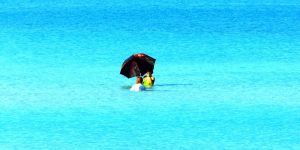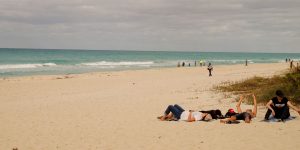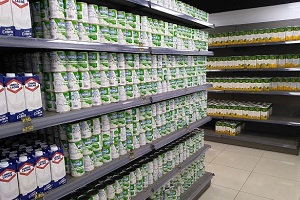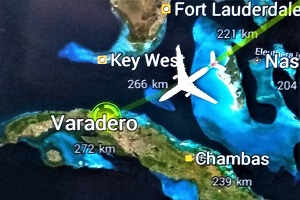Best time to visit Cuba
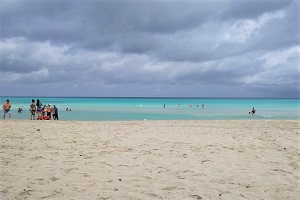
Updated: Dec 19, 2022
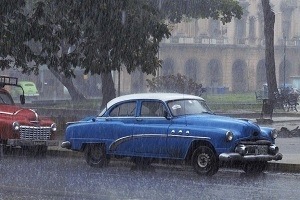
Updated: Dec 19, 2022
Cuba is known for its warm tropical climate that makes the Island a great vacation destination. The warm and humid weather is due to its location on the northern edge of the tropics. If you want to know the most important information about the weather in Cuba and which is the best time to visit the country, keep reading the article to learn the details!
The country counts with approximately 330 sunny days in the year and the summer months are particularly hot and moist. The best season for going on round trips is the less warm and dry winter months. During winter there are relative cold periods, especially in the north coast of western Cuba. It’s also quite important to pay attention to the high levels of UV radiation all year round.
Mostly the temperatures are in the range of pleasant to really high. According to the subtropical climate zone, also the humidity is “high” to “very high”. In the annual average, temperature is around 25° C with humidity over 70%. In the Southeast of the island they are usually a bit higher and in Santiago de Cuba few degrees warmer than in Havana. Rain is more recurrent in the extreme southeast (in the mountains around Santiago and in Baracoa) than in the rest of the country. The result of the increased precipitation in these regions is a particularly strong tropical flora.
­
Temperatures & humidity: »mucho calor!«
While in Northern countries winters are widely considered to be the less pleasant season, in Cuba it is the summer. Especially during the months of May to October it is often intolerable hot and humid. The thermometer is practically never under 30 during the day, often increasing up to 35 degrees. At least in the cities it gets extremely hot, but at night it is a little cool. During this time the humidity is mostly in a range from 90 to 95%, so people suffer under the heat. Almost every day it is said: »mucho calor« – what a heat!
The Cuban winter is nicely warm and also the humidity is less than in the summer. Cooler days come especially in December and January, but sometimes also in February. However, the cold periods are usually limited to a few days. If a cold front comes (see below), the thermometer can get to 15 degrees during the day and at night reach a single-digit range.
­
Water temperature
Thinking to go for a swim and enjoy Cuban beaches? We have good news for you: The water temperature is warm all year round, it does not fall below 24 and reaches in the peak even 29 degrees. But on a cold winter day, bathing - more precisely, leaving the water - can be quite uncomfortable. If you have no luck in winter and catch a cold front, probably you can hardly swim for ten days at a time (see cold front). Since the winters are generally too cold for Cubans, they visit the beaches almost exclusively in summer.
On the island, you have to be informed of the greatest bathing spots. The north coast borders the Atlantic Ocean in western Cuba, where the warm water from the Gulf of Mexico flows through the Florida Strait towards Europe. On the south coast is the Caribbean Sea, which is not only calmer, but also a little warmer.
­
The best time to visit Cuba
Attending to the outlined climatic conditions, the winter months are better for round trips and the summer months for beach vacations. Of course these trips are also possible in the summer, but they can be very exhausting, because of the high temperatures and the humidity, so loss of sweat is almost inevitable. In addition, it rains more often in summer because it is the rainy season and also the strong sun should be considered.
In summer the exposure to exceptionally high levels of UV radiation has to be expected. The northern solstice runs pretty much exactly through Havana. The UV index for Cuba shows values up to 12. According to the definition of the World Health Organization, values over 11 can be described as extreme. So you should definitely think about sufficient sun protection, with light-colored types. In this sense children are particularly at risk.
The coldest months are January and February: during these months the average temperature is a pleasant 22° C. In addition there is a dry season in winter. The temperatures can also fall quite strongly (see cold front). It must be expected, since it regularly happens, that it gets too cold for swimming - especially on the north coast.
There is no such thing as the best vacation time when traveling to Cuba. Depending on the travel concept and physical ability, the country is always easy to travel to.
­
The rain season in Cuba
The rainy season is the period of the warm summer months of May until the end of October. During this period precipitation occurs. It rains almost every day, especially in the afternoons after the hot midday hours (tropical zenith rain). These turn out to be short and heavy rain, to very heavy rain. If the rainstorms last long enough, they bring freshness. Floods regularly happen if it rains for several days, but that is quite rare. Attending to the statistics, there are more rainy days in October.
­
The hurricane season in Cuba
The hurricane season in the Caribbean is from August until November, after the sea water and the air layers have heated up sufficiently. The storms feed through the energy of the sea and earth rotation helps create a vortex that grows stronger as long as conditions permit it. Severe cyclones can expand for hundreds of kilometers and remain over the ocean for up to two weeks. If they hit land, they often cause catastrophic damage in thousands of square kilometers. The devastation is a result of the high wind speeds and the giant amount of rain that can lead to meter-high floods. According to their strength, the cyclones are on a scale categorized in grades from 1 to 5. The highest category 5 counts as a hurricane when the wind speed reaches over 280 km / h.
The good news is that these fatal storms only happen every few years. Historically, the most dangerous months in Cuba were October (40 registered hurricanes), September (34), August (17) and November (10). The last major hurricane hit the country in September 2017. Cyclone [120] Irma (Category 5) devastated some Cayos and flooded parts of Havana, among other damages. There were ten deaths across the country, seven of them in Havana.
What if there was a hurricane?
The formation of tropical storms is usually well monitored, so threatened areas are evacuated in time. The people that stay in safe buildings are generally not in danger. However, you can expect power outages lasting for days (larger hotels have emergency power generators), restrictions in telecommunications and blocked roads. Airports can be so badly damaged that air traffic must be suspended.
The restoration of infrastructure in tourist regions is a priority. Overall, Cuban crisis management is typical in comparison to neighboring countries.
If there is a hurricane before you start your trip, the organizers often allow free rebooking or cancellation. When the local situation is particularly dramatic, holidaymakers can cancel package trips due to significant bad climatological conditions. For package tours, the organizers are required to fly out vacationers immediately.
­
Cold front in the Caribbean: »Frente Frio«
Tour operators like to advertise that in Cuba, during the whole year, the weather is perfect for dipping into the ocean. In fact, the tropical climate ensures that it hardly ever gets cold on the island. But only for some periods, because in winter there are regularly cool days. Cubans refer to the cold air coming from the north as »Frente Frio« - that is a cold front. They occur practically every winter, even several times. If you are unlucky, you can experience a cold front lasting over a week in the time from December to January.
If a cold front comes, a cool wind often blows on the coast. Especially on the western north coast, so around Varadero or Havana, it is hardly impossible to bathe, because that's where the temperatures fall the most. At night the thermometer can go below 10 degrees.
It usually stays warmer in the southwest of the island. If you want a good weather for swimming during winter, better stay in the south or southeast - for example in Guardalavaca - because the cold north winds rarely touch these areas.
Also, during round trips, the cold front has an effect on public life. The typical heat drives people outdoors and is an important part of life; however cities seem to be deserted during a cold front. Cubans are sensitive to chilly weather and if it gets cold, they prefer to stay in their homes. If the thermometer drops below 20 degrees, it is common that already thick jackets, hats or even gloves are unpacked.
­
Time difference & times of day
Cuba has the same time zone on the entire national territory (CET minus 6 hours). The time difference is minus six hours. Cuba represents winter and summer time according to the American data. It causes a deviation in March and at the end of October as the time change takes place one week later.
The longest days are in June with a good 13 hours (7 until 8:30 p.m.), the shortest in December with just under 11 hours (7 a.m. to 6 p.m.). So in winter it will be a good two hours earlier before the dark.
­
Climate table for Cuba
The warmest month is August with 27.5 °C average temperature. On the other hand, January is the coolest with an average of 22.5 °C. The wettest month is June with 191 mm of precipitation. December is the driest with 38 mm average rainfall.
| Temperature max (ºC) | Temperature mín (ºC) | Rainy Day (mm) | Water (°C) | |
| January | 27.7 | 17.5 | 6 (46) | 25 |
| February | 28.5 | 17.7 | 5 (48) | 24 |
| March | 29.4 | 18.6 | 6 (54) | 25 |
| April | 30.5 | 19.8 | 6 (65) | 26 |
| Mai | 31.4 | 21.6 | 12 (151) | 27 |
| June | 31.9 | 22.9 | 14 (183) | 27 |
| July | 32.7 | 23.0 | 13 (132) | 28 |
| August | 32.8 | 23.0 | 14 (155) | 28 |
| September | 32.0 | 22.8 | 16 (195) | 28 |
| October | 30.9 | 22.0 | 13 (149) | 28 |
| November | 29.2 | 20.4 | 9 (76) | 27 |
| December | 28.1 | 18.7 | 7 (43) | 27 |
